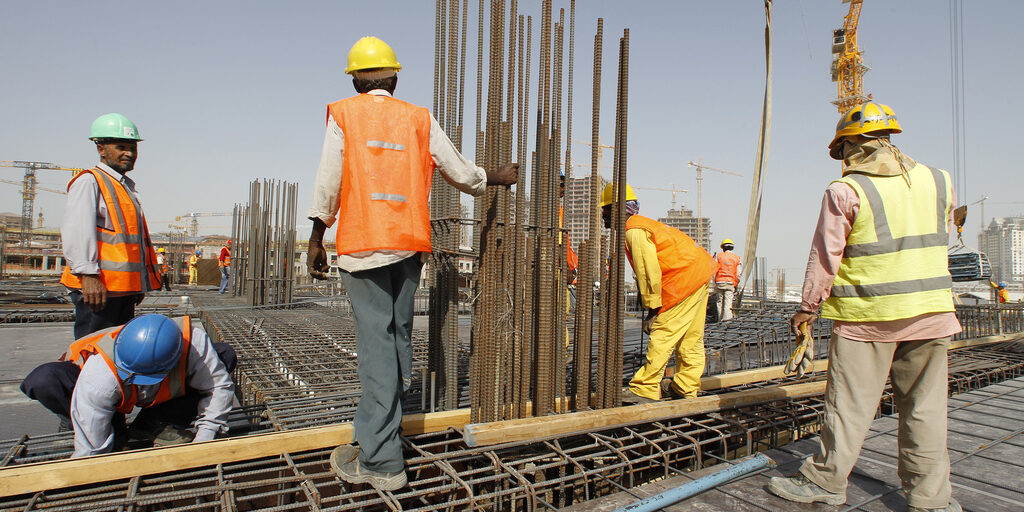What about if I informed you a six-figure position was open, just waiting for it to come and fill it up. But what if there were hundreds of others just like that, with no one qualifying either to fill those jobs. This is the strange situation in which the U.S. construction industry was going into 2019. There are job openings almost anywhere in the nation, however, as per reports, that there aren’t enough eligible individuals to occupy these lucrative jobs.75 percent of companies in the United States are planning to hire more workers, as per the Associated General Contractors of America. According to a report on Fox Business, the rise is attributable to the tax overhaul signed in December 2018, the slashing of red tape by the state, a healthy economy, and sustained positive trends in the construction industry. Mostly on the flip side, with all of those positions, 50 percent of construction firms reported difficulty in recruiting both higher paid and eligible employees. This occurs even though 60% of construction firms have indicated to the AGC that they have raised basic salary to hire or retain employees and 36% have also offered bonuses and benefits.
“In the Fox Business post, Stephen Mulva, director of the Construction Industry Institute, said,” The general population does not know how satisfying and lucrative [construction jobs can be]. “Six-figure incomes are not unusual.” In fact, according to the most recent monthly CFIB survey, the lack of skilled labor is the key factor restricting the revenue and output growth of companies. A vacant position implies that work goes undone or gives your other workers a heavier load, and also you as the owner of the company. More than 429,000 jobs across the country remained empty for more than four months last year. That’s a lot of missed opportunities. In the construction industry, the situation is especially harsh-while the national work occupancy rate is 3.3 percent, manufacturing companies face a startling 4.9 percent occupancy rate, reflecting 50,400 unfilled vacancies. It will also get worse: the Canadian Building Association estimates that Canada will lose almost a quarter of a million construction jobs due to retirement in the next decade. One component of the issue is that high schools seldom encourage their students’ skilled trades as career options, rather concentrating on conventional white-collar jobs. Our education system also drives young people into university education, ignoring that college, business school, and on-the-job training programs provide excellent opportunities for graduates. Students need to be introduced to and provided more chances to try out jobs in professional trades before graduation.
In order to find solutions to the challenges of skilled labor shortages, construction firms have to work proactively. Employees today want opportunities to continue learning and improve professionally, so you can keep them encouraged by delivering training as an employer. This brings in even more qualified professionals for your firm, and it also brings loyalty back to these employees; they will feel valued due to the time and money you have spent on them. This would also help reduce the supply gap in demand for skilled workers in construction.
As one of the best Canada Safety training providers, True North Safety offers many certification courses for occupational health and safety training, such as Traffic Control Person Training and Construction Safety Training, which are required at several work sites. Instead of feeling frustrated by the absence of qualified employees, small construction company owners should begin to take action. They are going to start fixing the shortage of construction work now and in the future with some of these tactics.
Global Construction Analysis reports on the Associated General Contractors of Canada’s latest response to the number of construction employment in June, that signaled a continuing struggle for the sector to recruit adequate skilled employees, amid higher-than-average hourly earnings of $30.71 now. Having owned a small business, especially when you are understaffed, can be a lonely calling. For companies that wish to expand and prosper, the current labor shortage is extremely difficult. It can make all the difference to have someone in your corner, with the right combination of policy proposals and encouragement.
The association encouraged the federal community to support recruit more individuals to high-paying construction jobs by increasing school career and technical programs allocation and implementing immigration reform that enables more individuals with construction expertise to enter the country legally, GCR reports. “In the latest comment, Stephen E. Sandherr, president and chief executive of AGC, figured out that what his organization sees as the cause for the now dried-up recruitment pipeline:” Too many over-skilled staff and not enough skilled bricklayers and other craft construction professionals remain to be created by the nation’s educational system. Too many young people are trying to pay off college loans as a consequence of these educational asymmetries, and too many construction companies are struggling to fill jobs that pay well and do not require expensive degrees.







